Key takeaways:
- Wildlife rescue teams are vital for rehabilitating injured or orphaned animals and educating communities about coexistence with nature.
- The protection of animals is essential for ecological balance and human well-being, fostering compassion and empathy within communities.
- Rescue roles require practical skills, strong communication, and adaptability to handle unpredictable situations effectively.
- Challenges during rescue missions include emotional tolls, logistical hurdles, and the unpredictable nature of wildlife, emphasizing the need for resourcefulness.
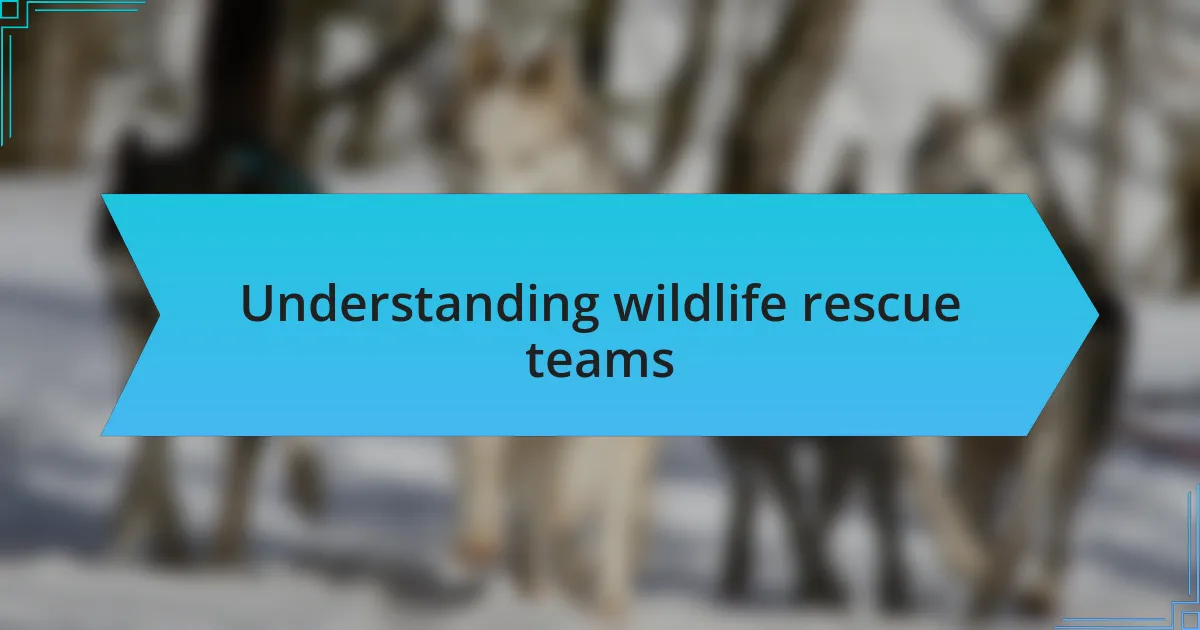
Understanding wildlife rescue teams
Wildlife rescue teams are composed of dedicated individuals who work tirelessly to rehabilitate and protect injured or orphaned animals. It’s incredible to see how a group of passionate people can come together to provide care and support for creatures that often can’t fend for themselves. Have you ever wondered what drives someone to spend hours nurturing a small, vulnerable animal?
In my experience, one of the most rewarding aspects of being part of a wildlife rescue team is witnessing the recovery of an animal that seemed lost and helpless. I remember the first time I held a baby bird that had fallen from its nest. With the right care, it was able to fly again, which brought an overwhelming sense of joy. It’s moments like these that remind me why we do this work and the impact we can have on their lives.
Wildlife rescue teams also play a crucial role in educating the community about the importance of coexistence with nature. Engaging with people about common misconceptions can spark a change in how we view and interact with wildlife. Isn’t it fascinating to think about how each small conversation can ripple out into the community, fostering a greater respect for our wildlife and their habitats?
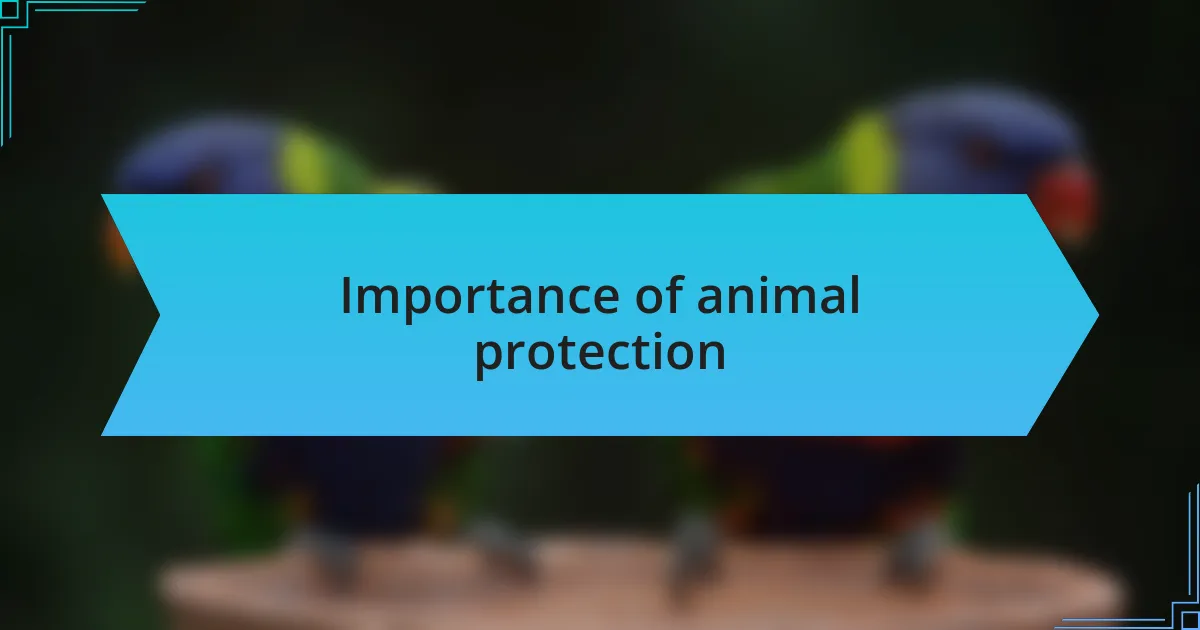
Importance of animal protection
Animal protection is vital in preserving the delicate balance of our ecosystems. Without intervention, countless species face the threat of extinction due to habitat loss and human interference. I once accompanied a rescue team to a local wetland where we found a group of displaced turtles. Watching them return to their natural habitat felt like a small victory, reminding me how critical our efforts are in safeguarding the future of these creatures.
Furthermore, protecting animals also has a direct impact on human health and well-being. For instance, a thriving wildlife population contributes to a healthy environment, with diverse species playing essential roles in pollination, seed dispersal, and pest control. I remember a community event where we discussed these connections, and it struck me how passionately people began to engage once they understood that their well-being is intertwined with the health of wildlife. Hasn’t it always amazed you how interconnected our lives are with nature?
Moreover, when we prioritize animal protection, we foster compassion and empathy within our communities. Each rescue story not only saves a life; it inspires others to value and respect all living beings. I recall a time when a rescued fox was brought to our center. Witnessing its journey from fear to trust touched everyone involved and opened hearts that may have previously been indifferent. Isn’t it remarkable how these experiences can reshape perspectives and lead to a more humane society?
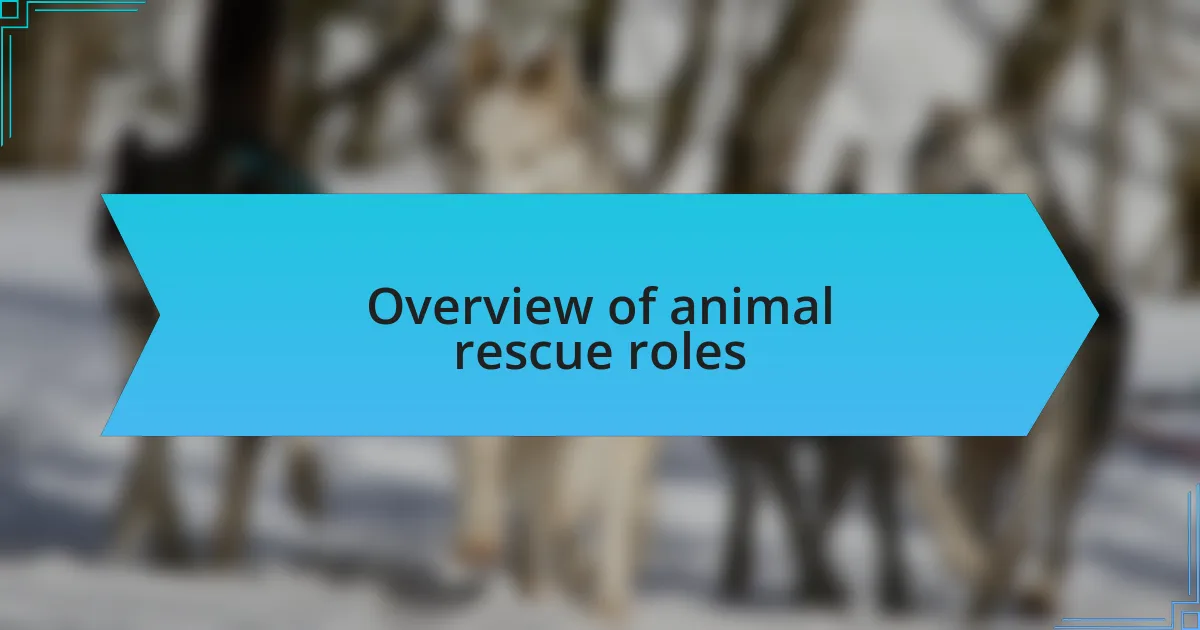
Overview of animal rescue roles
Animal rescue roles encompass a variety of responsibilities, each contributing to the well-being of animals in distress. For instance, rescue coordinators play a pivotal role in organizing and managing operations, ensuring that every rescue mission runs smoothly. I remember a situation where our team faced a distress call about an injured bird. It was remarkable how the coordinator quickly mobilized our volunteers, showcasing the importance of effective leadership in times of crisis.
In addition to coordination, rehabilitation specialists focus on the recovery of rescued animals, providing the necessary medical care and sanctuary they need to heal. One day, I spent hours caring for a raccoon recovering from an injury, and seeing it regain strength reminded me of the profound impact dedicated care can have. Isn’t it heartwarming to think that our efforts can give these animals a second chance at life?
Lastly, community outreach personnel play a crucial role by raising awareness about animal rescue and the importance of protecting wildlife. I once participated in a local school event where we shared stories of rescued animals; the children’s enthusiasm and curiosity made me realize how vital it is to engage the younger generation in conservation efforts. Don’t you find it inspiring to see how education can spark a lifelong passion for animal protection?
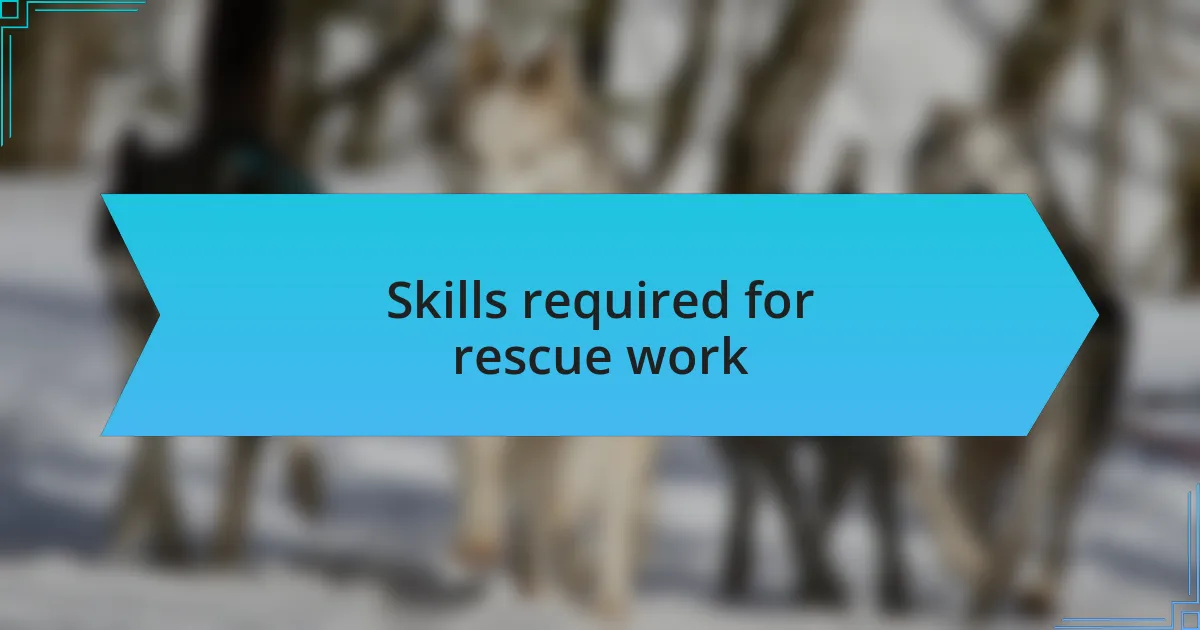
Skills required for rescue work
Having practical skills in first aid and animal handling is essential for anyone involved in wildlife rescue. I recall the time we received a call about a deer entangled in fencing. The adrenaline rush was palpable as we approached the scene, and my training in safely handling distressed wildlife was invaluable. Imagine the pressure of needing to act quickly while ensuring the animal’s safety!
Strong communication skills also play a pivotal role in rescue work. During one mission, I had to relay crucial information to a team member while maneuvering through thick brush. It struck me how vital clear instructions can be when every second counts. Have you ever found yourself in a situation where clear communication made all the difference? I certainly have, and it makes me appreciate how teamwork can elevate our rescue efforts.
Adaptability is another critical skill. The unpredictable nature of rescue situations means that one must think on their feet. I remember attempting to catch a frightened fox that dashed in every direction during a rescue. Flexibility in my approach eventually led to success, but it also highlighted how important it is to stay calm and adjust strategies on the fly. Isn’t it fascinating how resilience can turn a seemingly chaotic moment into a success story?
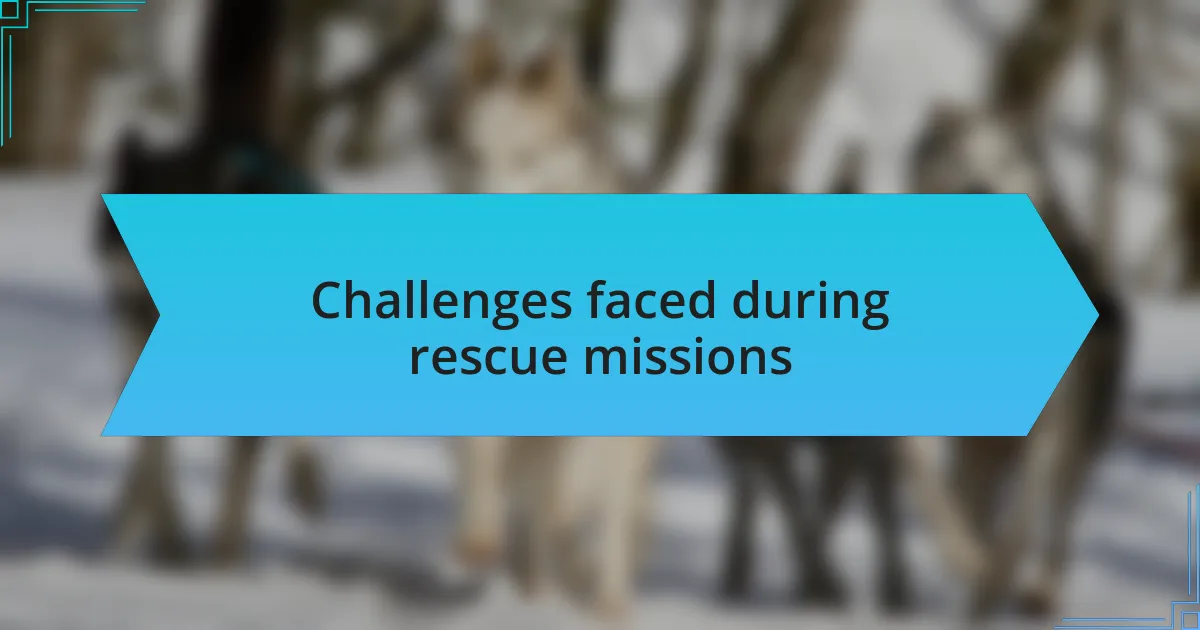
Challenges faced during rescue missions
Challenges often arise unexpectedly during wildlife rescue missions, making each experience unique. I vividly remember the time we attempted to rescue a stranded seal. The tide was coming in fast, and as I waded through the water, I felt a wave of panic. Nature can be as unpredictable as it is beautiful. Have you encountered something that intensified your urgency?
Another significant challenge is dealing with the emotional toll that rescue work can take. I once helped a raccoon that suffered severe injuries after being hit by a car. Seeing its pain brought tears to my eyes, and maintaining composure was incredibly tough. It’s a stark reminder that while we strive to save lives, not all outcomes are successful, and that weight can linger long after the mission ends. How do you cope with such heaviness after facing the harsh realities of wildlife?
Logistical hurdles also complicate rescue efforts. I recall a mission where we had to navigate a dense forest to reach an injured bird. The thick underbrush slowed our progress, and time felt like it was slipping away. It was both frustrating and exhilarating, pushing me to think creatively about how we could reach our goal. Have you ever felt the urge to innovate in the face of a challenge? These moments reinforce the idea that resourcefulness is just as vital as technical skills in wildlife rescue.